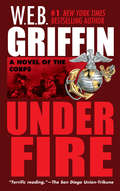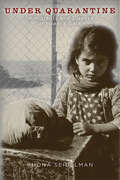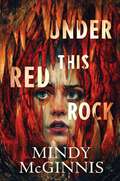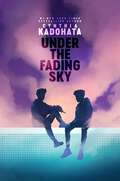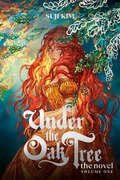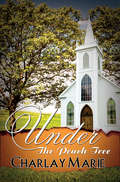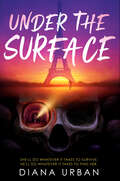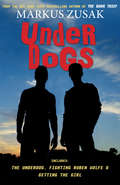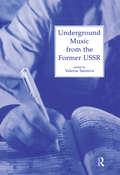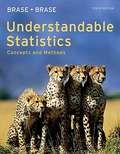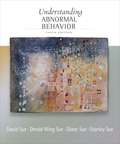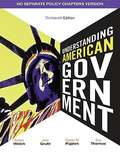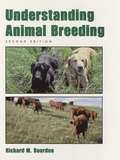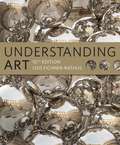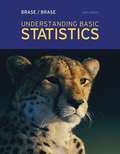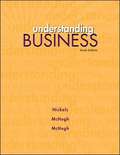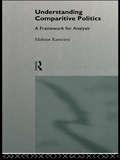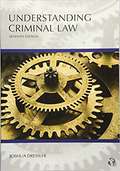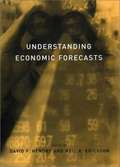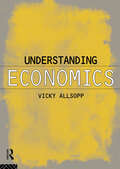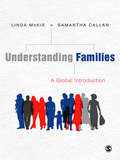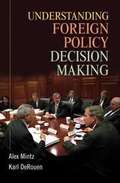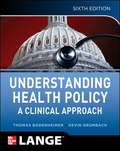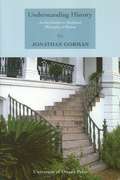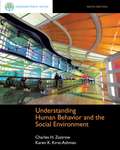- Table View
- List View
Under Fire (Corps #9)
by W.E.B. GriffinGriffin takes his Marine heroes to Korea, in the biggest Corps novel of them all.Through eight books, Griffin's bestselling chronicle of the Marine Corps has proven itself to be one of the country's most enduring and popular series. Now, Griffin leaves World War II behind and thrusts his readers deep into the heart of the Korean War.June 1, 1950: Captain Ken McCoy's report on probable North Korean hostilities meets with so much bureaucratic displeasure that not only is it promptly suppressed, but McCoy himself is kicked out of the Corps. At least two outfits, however, are not impressed by such infighting: the fledgling CIA, which promptly hires McCoy, and the North Koreans, who on June 25th invade across the 38th parallel. Immediately, veterans scattered throughout military and civilian life are called up, many with only 72 hours' notice. Fleming Pickering and his daredevil son Malcolm, Ed Manning, George Hart, Jack Stecker, Jake Dillon, Ernie Zimmerman - for them and their sweethearts and wives, names such as Inchon, Pusan, and the Choisin Reservoir will acquire a new, bloody reality, and Korea will become not only a new battlefield...but their greatest challenge of all.Filled with the crackling realism, adventure, and rich characters that are his hallmarks, Under Fire is further proof, as Tom Clancy says, that "W.E.B. Griffin is a storyteller in the grand tradition."
Under Quarantine: Immigrants and Disease at Israel’s Gate
by Rhona SeidelmanUnder Quarantine is the riveting story of Shaar Ha’aliya, a central immigrant processing camp opened shortly after Israel became an independent state. This historic gateway for Jewish migration was surrounded by a controversial barbed wire fence. The camp administrators defended this imposing barrier as a necessary quarantine measure - even as detained immigrants regularly defied it by crawling out of the camp and returning at will. Focusing on the conflicts and complications surrounding the medical quarantine, this book brings the history of this place and the remarkable experiences of the immigrants who went through it to life. Evocative and bold, Under Quarantine shows that we cannot fully understand Israel until we understand Shaar Ha’aliya. The gate of arrival for nearly half a million immigrants - a space of homecoming, conflict, exclusion and welcoming - here was the country’s crucible.
Under This Red Rock
by Mindy McGinnisFrom award-winning author Mindy McGinnis comes a mesmerizing YA psychological mystery following a teen girl who is grappling with the death of her brother as she starts a new job in the caverns of Ohio—only to become the number one suspect in her coworker's murder. Perfect for fans of Courtney Summers and Kathleen Glasgow.Neely’s monsters don’t always follow her rules, so when the little girl under her bed, the man in her closet, and the disembodied voice that shadows her every move become louder, she knows she’s in trouble. With a history of mental illness in her family and the suicide of her older brother heavy on her mind, Neely takes a job as a tour guide in the one place her monsters can’t follow—the caverns. There . . . she meets Mila. Mila is everything Neely isn’t—beautiful, strong, and confident. As the two become closer, Neely’s innocent crush grows into something more. When a midnight staff party exposes Neely to drugs, she follows Mila’s lead . . . only to have her hallucinations escalate.When Mila is found brutally murdered in the caverns, Neely has to admit that her memories of that night are vague at best. With her monsters now out in the open and her grip on reality slipping, Neely must figure out who killed Mila . . . and face the possibility that it might have been her.
Under the Fading Sky
by Cynthia KadohataA teen boy thinks his vaping habit is harmless until it becomes a crippling addiction of nightmarish dimensions in this searing young adult novel from Newbery and National Book Award winner Cynthia Kadohata.So, stuff has, like, a beginning and an end. And you don&’t really realize that until the end, or right before. Before that, you&’re just thinking that you and your homies are chillin&’ and getting high, and it&’s all gonna work out. You know? Truth is, the way life works is that you were born in the eye of a hurricane, and you think that&’s just the way life is, calm-like. Until…it isn&’t. So, yeah, Elijah is only sixteen, and already he would change a lot of stuff if he could go back in time. But you can&’t ever do that. And when you can&’t, that&’s when you find out who you really are.
Under the Oak Tree: Volume 1 (Under the Oak Tree - Novel #1)
by Suji KimMost fairytales end with a wedding and a happily-ever-after—but this is no fairytale. The updated and official translation of Under the Oak Tree, the #1 webnovel on MANTA. Lady Maximilian is the daughter of the powerful Duke Croyso, but she is rarely allowed outside her family’s sprawling castle for fear that her stutter will tarnish their noble name. When she is forced to marry Sir Riftan, a lowborn knight caught in one of her father’s schemes, Maxi doesn’t dare hope for happiness, let alone love. Her stumbling communication and his gruff manner sour their relationship before it can begin, and Riftan leaves without a word the morning after their vows are exchanged. Now, three years after their disastrous wedding night, Riftan has returned as a war hero. To Maxi’s surprise, despite rumors that he was offered marriage to Princess Agnes, a beautiful and renowned sorceress, Riftan still wants Maxi for his wife. And when he comes to claim her, his longing becomes a desire that bewilders Maxi, even as she is overcome by the scorching heat that Riftan’s presence ignites within her. As she learns to navigate the intricacies of her new life, Maxi will find herself and her courage, and discover that she is anything but powerless. This volume collects chapters 1-76 of the original webnovel by Suji Kim. <b>New York Times Bestseller</b>
Under the Peach Tree
by Charlay MarieHope grew up feeling ugly and unloved. Called "the devil" by her mother, she was not allowed to attend church on Sundays with her twin sister, Faith. At fifteen, Hope is wild. She no longer cares about her mother, or anyone else for that matter.When her mother kicks her out of the house, Hope spends several days homeless and alone--until she runs into an elderly blind prophetess named May. She offers Hope a gift from God: a new home where she is taught the true meaning of love, family, and God.When Hope meets Dante, a quirky yet attractive boy who visits with May every day, her life changes even more. With young love in the air, Hope feels like nothing can go wrong. But just when she thinks her life is perfect, she learns that May is dying of cancer. Hope must learn how to conquer her deepest fears and have faith that all things work together for the good of God. With everything she's experienced in her young life, will she be able to trust God?
Under the Surface
by Diana UrbanAn epic survival-thriller about four teens who get lost in the Paris catacombs for days—a gripping and propulsive story of love, danger, betrayal, and hope… even when all seems lost."Tense and fast-moving, with a unique setting and compelling characters, Under the Surface is Diana Urban&’s best yet."—Karen M. McManus, #1 New York Times bestselling author of One of Us Is LyingRuby is terrified to cave to her feelings for Sean and risk him crushing her heart. Sean is pumped to spend a week with Ruby in Paris on their senior class trip, and he&’ll wait however long until she&’s ready to take things further.But when Ruby&’s best friend sneaks out the first night to meet a mysterious French boy, Ruby goes after her with two classmates, but caves to another temptation: attending mystery boy&’s exclusive party in the Paris catacombs, the intricate web of tunnels beneath the city, home to six million long-dead Parisians. Only they never reach the party.Underground, as something sinister chases them, they get lost in the endless maze of bones, uncovering dark secrets about the catacombs…..and each other. And if they can&’t find a way out, they&’ll die in the dark beneath the City of Light. Aboveground, Sean races to find the girl he loves as a media frenzy over the four missing teens begins.From award-winning author and rising YA star Diana Urban comes a twisty tale of four teens lost in the dark beneath the City of Light and the race to find them.
Underdogs (Underdogs Ser. #1)
by Markus ZusakFrom the bestselling author of The Book ThiefBefore The Book Thief, Markus Zusak wrote a trilogy of novels about the Wolfe Brothers: The Underdog, Fighting Rueben Wolfe, and Getting the Girl. Cameron and Ruben Wolfe are champions at getting into fights, coming up with half-baked schemes, and generally disappointing girls, their parents, and their much more motivated older siblings. They're intensely loyal to each other, brothers at their best and at their very worst. But when Cameron falls head over heels for Ruben's girlfriend, the strength of their bond is tested to its breaking point.We're proud to present these novels together for the first time, and to be introducing American readers to The Underdog, never before published in the United States. Fans of The Book Thief won't want to miss reading the novels that launched Markus Zusak's stellar career.
Underground Music from the Former USSR
by Romela KohanovskayaWhat happened to contemporary music in the Soviet Union after Stravinsky, Shostakovich and Prokofiev? This book is a valuable source of information on the composers of the generations following these three great innovators. It is a document of the hidden period of Russian music, of what happened after the denunciation of Shostakovich and Prokofiev by the Composers' Union. It contains profiles of the most interesting and innovative composers from Russia and the former Soviet republics, written by leading musicologists. Featured composers include Andrei Volkonsky, Philip Gershkovich, Sergei Slonimsky, Boris Tishchenko, Valentin Silvestrov, Leonid Grabovsky , Nikolai Karetnikov , Alemdar Karamanov, Roman Ledenyov , Vyacheslav Artyomov , Faraj Karayev , Alexander Knaifel , Vladislav Shoot Alexander Vustin, Victor Ekimovksy , Alexander Raskatov , Sergei Pavlenko, Vladimir Tarnopolsy.
Understandable Statistics: Concepts and Methods (Tenth Edition)
by Charles Henry Brase Corrinne Pellillo BraseUnderstandable Statistics: Concepts and Methods, Tenth Edition is a thorough, yet accessible program designed to help readers overcome their apprehensions about statistics. The authors provide clear guidance and informal advice while showing the links between statistics and the world.
Understanding Abnormal Behavior
by David Sue Stanley Sue Derald Sue Diane SueFeaturing current research, high-quality scholarship, and an appealing design, UNDERSTANDING ABNORMAL BEHAVIOR, 10th Edition, provides an inviting and stimulating look into abnormal psychology. The first abnormal psychology book to present a thoroughly integrated multicultural perspective -- based on the authors' view that cross-cultural comparisons can greatly enhance the understanding of disorders -- the text provides extensive coverage and integration of multicultural models, explanations, and concepts. It also continues the multipath model introduced in the 9th edition, emphasizing the importance of considering biological, psychological, social, and sociocultural factors, as well as their interactions in the etiology of mental disorders. The book helps you gain an understanding of abnormal behavior as scientific and clinical endeavors, while providing insight into the tools that mental health professionals use to study and treat disorders. It also begins to discuss the proposed changes in the APA's DSM-5 definition of mental disorders and its implications, including its change of focus from a categorical to a dimensional system of personality assessment.
Understanding American Government - No Separate Policy Chapters
by Sue Thomas Susan Welch John Gruhl Susan M. RigdonUNDERSTANDING AMERICAN GOVERNMENT is highly respected and trusted for its attention to research and issues of diversity as well as for its award-winning team of authors. While covering the foundations and features of American government, this text also moves beyond the nuts and bolts to explain why and how important features of government have evolved, what their impact on government and individuals is, and why these features are controversial (if they are) and worth learning. More than just narrating facts and current issues, UNDERSTANDING AMERICAN GOVERNMENT leaves students with an understanding of the "why" so that they can apply what they've learned long after completing the course.
Understanding Animal Breeding (Second Edition)
by Richard M. BourdonAn experienced animal breeder, Rick Bourdon designed this book to be a modern, technologically up-to-date approach to animal breeding. Understanding Animal Breeding addresses the abstract concepts of animal breeding, presenting the necessary mathematics, but previous experience in genetics and statistics is not assumed. Well organized and readable, the book stresses application, then explains theory for an overall understanding of the material. Coverage explores the latest material on interactions and breeding objectives; performance testing; probabilities and inheritance; the Hardy-Weinberg equilibrium with multiple alleles; realized response to selection; breeding for uniformity; and biotechnology. For practicing animal breeders as well as those interested in breeding and agriculture.
Understanding Art (Tenth Edition)
by Lois Fichner-RathusUNDERSTANDING ART provides a balanced approach to appreciating art, incorporating coverage of masterworks from the past and present. Author Lois Fichner-Rathus combines a conversational writing style with rich images, all designed to inspire understanding of the art that surrounds you in everyday life.
Understanding Basic Statistics Sixth Edition
by Charles Henry Brase Corrinne Pellillo BraseUNDERSTANDING BASIC STATISTICS, Sixth Edition, provides plenty of guidance and informal advice demonstrating the links between statistics and the real world. Thorough yet abbreviated, the text offers a reader-friendly style and a new, complete technology package to supplement learning.
Understanding Business Tenth Edition
by William G. Nickels James M. Mchugh Susan M. MchughUnderstanding Business by Nickels, McHugh, and McHugh has been the number one textbook in the introduction to business market for several editions for three reasons: (1) The commitment and dedication of an author team that teaches this course and believes in the importance and power of this learning experience, (2) we listen to our customers, and (3) the quality of our supplements package. We consistently look to the experts - full-time faculty members, adjunct instructors, and of course students - to drive the decisions we make about the text itself and the ancillary package. Through focus groups, symposia, as well as extensive reviewing of both text and key ancillaries, we have heard the stories of more than 600 professors and their insights and experiences are evident on every page of the revision and in every supplement. As teachers of the course and users of their own materials, the author team is dedicated to the principles of excellence in business education. From providing the richest most current topical coverage to using dynamic pedagogy that puts students in touch with today's real business issues, to creating groundbreaking and market-defining ancillary items for professors and students alike, Understanding Business leads the way.
Understanding Comparative Politics: A Framework for Analysis
by Mehran KamravaComparative politics has undergone significant theoretical changes in recent decades. Particularly since the 1980s, a new generation of scholars have revamped and rejuvinated the study of the subject. Mehran Kamrava examines current and past approaches to the study of comparative politics and proposes a new framework for analysis. This is achieved through a comparative examination of state and social institutions, the interactions that occur between them, and the poltical cultures within which they operate. The book also offers a concise and detailed synthesis of existing comparative frameworks that, up to now at least, have encountered analytical shortcomings on their own. Although analytically different in its arguments and emphasis from the current "Mainstream" genre of literature on comparative politics, the present study is a logical outgrowth of the scholarly works of the last decade or so. It will be essential reading for all students of comparative politics.
Understanding Criminal Law
by Joshua DresslerThis text is primarily designed for use by law students enrolled in a course in Criminal Law. It also has served successfully in undergraduate courses covering substantive criminal law. The text considers common law doctrine, statutory reform (with particular emphasis on the Model Penal Code), and constitutional law affecting the substantive criminal law.
Understanding Economic Forecasts
by David Hendry Neil EricssonHistorically, the theory of forecasting that underpinned actual practice in economics has been based on two key assumptions--that the model was a good representation of the economy, and that the structure of the economy would remain relatively unchanged. In reality, forecast models are mis-specified, the economy is subject to unanticipated shifts, and the failure to make accurate predictions is relatively common. In the last decade, economists have developed new theories of economic forecasting and additional methods of forecast evaluation that make less stringent assumptions. These theories and methods acknowledge that the economy is dynamic and prone to sudden shifts. They also recognize that forecasting models, however good, are greatly simplified representations that will be incorrect in some respects. One advantage of these newer approaches is that we can now account for the different results of competing forecasts. In this book academic specialists, practitioners, and a financial journalist explain these new developments in economic forecasting. The authors discuss how forecasting is conducted, evaluated, reported, and applied by academic, private, and governmental bodies, as well as how forecasting might be taught and what costs are induced by forecast errors. They also describe how econometric models for forecasting are constructed, how properties of forecasting methods can be analyzed, and what the future of economic forecasting may bring.
Understanding Economics
by Vicky AllsoppUnderstanding Economics presents an interesting and accessible introduction to key economic ideas. The book clearly shows the relevance of economics to everyday situations. Examples are drawn from the internal workings of households, business firms and non-profit organizations. The book is user friendly in both style and content and requires no prior knowledge of economics and minimal mathematics.
Understanding Families: A Global Introduction
by Samantha Callan Linda Mckie"I don't know how often I've wished for an introductory text on family life which encompassed critical contemporary sociological thinking alongside the basic information students need, and have only found fossilised thinking on a stodgy subject. But now all that has changed. McKie and Callan have achieved what I thought was almost impossible in Understanding Families - a textbook which provides unrivalled foundations for a critical understanding of contemporary families and relationships." - Carol Smart, The Morgan Centre, University of Manchester "This excellent, innovative, comprehensive and easy to read text should be essential reading for everyone keen to understand families across the globe... It will make an outstanding contribution to family studies and is highly recommended." - Janet Walker, Newcastle University "Easy to read text, which debates current thinking surrounding modern families. Case studies and questions for the reader throughout the text help traslate theory into practice." - Justine Gallagher, Northumbria University Families are the core building blocks of society. Our experience of them affects many aspects of our everyday lives shaping our expectations and future plans. Written by experts in family studies and family policy, this clear, engaging book adopts a global perspective to usefully examine how modern families can be explored and understood in research, policy and practice. Packed with critical pedagogy, including case-studies, think points, key words and a glossary, it guides students through topics such as relationships, sexualities and paid and unpaid work, continually returning to its central themes of process and structure. The book also: Applies key social theories to contemporary analysis Examines key studies on researching families and family life Explores the role of government policies and practices This comprehensive introduction to the study of families and relationships is a timely resource for students and lecturers working across the social sciences, particularly students of family studies, the sociology of the family, family policy, and social work and the family Linda McKie is Professor of Sociology, Glasgow Caledonian University; Samantha Callan is based at the Centre for Social Justice. They are both affiliated to the Centre for Research on Families and Relationships at the University of Edinburgh.
Understanding Foreign Policy Decision Making
by Alex Mintz Karl Derouen Jr.Understanding Foreign Policy Decision Making presents a psychological approach to foreign policy decision making. This approach focuses on the decision process, dynamics, and outcome. The book includes a wealth of extended real-world case studies and examples that are woven into the text. The cases and examples, which are written in an accessible style, include decisions made by leaders of the United States, Israel, New Zealand, Cuba, Iceland, United Kingdom, and others. In addition to coverage of the rational model of decision making, levels of analysis of foreign policy decision making, and types of decisions, the book includes extensive material on alternatives to the rational choice model, the marketing and framing of decisions, cognitive biases, and domestic, cultural, and international influences on decision making in international affairs. Existing textbooks do not present such an approach to foreign policy decision making, international relations, American foreign policy, and comparative foreign policy.
Understanding Health Policy: A Clinical Approach
by Thomas Bodenheimer Kevin GrumbachUnderstand how the healthcare system works - and how you can succeed in it Covers the 2010 Affordable Care Act A Doody's Core Title for 2015! The most trusted and comprehensive guide to healthcare available, Understanding Health Policy provides everything students and professionals need to build a solid foundation on the field's most critical issues. Expert practitioners in both the public and private healthcare sectors, the authors cover the entire scope of our healthcare system--from the concepts behind policy decisions to concrete examples of how they affect patients and professionals alike. Understanding Health Policy, 6e makes otherwise difficult concepts easy to understand--so you can make better decisions, improve outcomes, and enact positive change on a daily basis. Features: Coverage of structure, organization, and financing of the health care system Key principles, descriptions, and concrete examples are skillfully interwoven in each chapter to make important issues interesting and understandable Clinical vignettes clarify difficult concepts and demonstrate how they apply to real-world situations Comprehensive list of review questions reinforce what you have learned Understanding Health Policy, 6e will help you develop a clearer, more systematic way of thinking about health care in the United States, its problems, and the alternatives for managing and solving these problems.
Understanding History: An Introduction to Analytical Philosophy of History
by Jonathan GormanThis book brings into question the very ability of historians to gather and communicate genuine knowledge about the past. Understanding History applies this general question from the philosophy of history to economic history of American slaveholders.
Understanding Human Behavior and the Social Environment (Ninth Edition)
by Charles Zastrow Karen K. Kirst-AshmanZastrow and Kirst-Ashman's UNDERSTANDING HUMAN BEHAVIOR AND THE SOCIAL ENVIRONMENT looks at lifespan through the lens of social work theory and practice, covering human development and behavior theories within the context of family, organizational, and community systems. Using a chronological lifespan approach, the book presents separate chapters on biological, psychological, and social impacts at the different lifespan stages with an emphasis on strengths and empowerment. As part of the Brooks/Cole Empowerment Series, this edition is completely up to date and thoroughly integrates the core competencies and recommended practice behaviors outlined in the 2008 Educational Policy and Accreditation Standards (EPAS) set by the Council on Social Work Education (CSWE).
